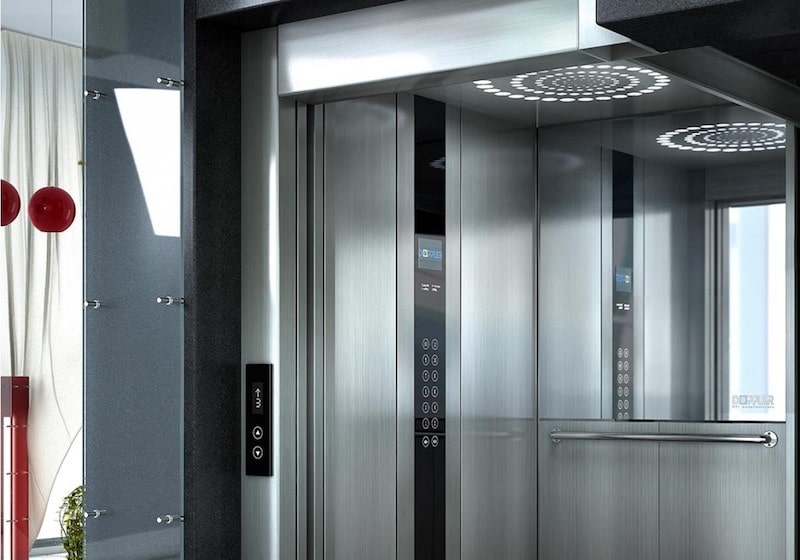Digging Into the Globe of Elevators: Usual Issues Encountered by Different Lift Mechanisms
As we navigate via the vertical transport systems of contemporary buildings, elevators stand out as a crucial component of our daily lives. From hydraulic elevators to grip systems and machine-room-less designs, each lift type comes with its collection of typical issues.
Hydraulic Elevators
Hydraulic lifts, commonly preferred for low-rise structures, use fluid pressure to control the motion of the elevator cars and truck (lift repair companies). This device entails a hydraulic pump pushing oil into a cylinder, creating the lift to relocate in the desired instructions. While hydraulic elevators are understood for their silent and smooth operation, they do come with their very own set of common concerns
One prevalent issue with hydraulic elevators is oil leak. The seals in the hydraulic system can wear in time, bring about oil seepage. This not only creates a mess yet can also impact the elevator's efficiency if left unaddressed. Additionally, problems with the control system, such as defective shutoffs or a malfunctioning pump, can cause disturbances in the elevator's movement.
Regular upkeep and timely repair services are essential to guarantee the smooth performance of hydraulic elevators. By resolving these typical issues proactively, structure owners can lessen downtime and ensure the security and effectiveness of their upright transport system.
Traction Elevators
When thinking about upright transport systems in structures, an additional common kind besides hydraulic lifts is the grip elevator. Grip lifts operate utilizing a system of ropes and counterweights that move the elevator automobile by gripping onto the hoist ropes. This mechanism enables for smoother and faster upright transportation compared to hydraulic systems.
One of the typical problems dealt with by grip lifts is rope wear. The consistent movement of the ropes within the traction system can result in deterioration in time, potentially triggering the lift to breakdown or end up being hazardous for usage. Regular assessments and upkeep of the ropes are essential to ensure the elevator's appropriate performance and safety and security.
Another problem that grip lifts might run into is associated with the control system. Troubles with the control system can result in problems such as irregular motion, hold-ups in reaction times, or perhaps full shutdowns. Regular screening and upkeep of the control system are essential to avoid such problems and make certain the elevator's reliability.
Machine-Room-Less (MRL) Lifts

One of the key elements of MRL elevators is the compact gearless grip device that is installed within the hoistway. This maker successfully drives the elevator cars and truck without the requirement for cumbersome tools located in typical grip elevators. Additionally, MRL elevators usually use a counterweight system to balance the vehicle, additional enhancing their energy performance.
In spite of their benefits, MRL elevators might deal with obstacles associated with repair and maintenance discover this due to the constrained area for devices setup. Accessibility for servicing elements within the shaft can be limited, needing specialized training for professionals. Appropriate maintenance schedules and routine examinations are important to ensure read the full info here the ongoing smooth operation of MRL elevators.
Overloading and Weight Restriction Issues
Straining and weight limitation problems are critical worries in elevator operations. Elevator manufacturers style raises with details weight capabilities to ensure traveler safety and tools durability.
When elevators are strained, it puts extreme stress on the electric motor, wires, and other components, possibly triggering malfunctions or breakdowns. If they detect excess weight, safety devices such as sensing units and overload sensing units are in area to prevent lifts from relocating. Furthermore, exceeding weight limitations can bring about enhanced energy intake and damage on the lift system.
To alleviate straining problems, developing supervisors ought to prominently present weight limits in elevators and enlighten passengers on the importance of sticking to these restrictions - lift repair companies. Normal upkeep checks by certified service technicians can likewise assist guarantee that lifts are running within secure weight parameters. By resolving overloading and weight restriction concerns proactively, building owners can boost lift safety and effectiveness
Electric System Failures
Going beyond weight limits in elevators can not just cause mechanical issues but also potentially add to electrical system failures within the lift infrastructure. Electrical system failings are a critical issue in elevator procedure, as they can cause unanticipated closures, malfunctions, or perhaps safety and security dangers. One common electric problem is the getting too hot of parts because of too much present circulation triggered by overloading the lift past its capacity. This can cause harm to the motor, control, or electrical wiring systems, causing costly repairs and downtime.
Regular upkeep and assessments are critical to recognize and deal Discover More with possible electric concerns quickly, making sure the secure and reliable procedure of elevator systems. By adhering to weight restrictions and conducting regular electrical system checks, structure proprietors can alleviate the risk of electrical failures in elevators.
Final Thought

Hydraulic elevators, commonly liked for low-rise buildings, use fluid stress to regulate the motion of the elevator automobile.When thinking about vertical transport systems in buildings, an additional usual type aside from hydraulic elevators is the traction elevator. Grip lifts operate making use of a system of ropes and counterweights that relocate the elevator auto by clutching onto the hoist ropes. Unlike standard lifts that require a different machine area to house the equipment, MRL elevators integrate most of the components within the shaft, eliminating the requirement for a committed machine space.In final thought, elevators deal with usual issues such as hydraulic breakdowns, traction system failings, and electrical system issues.